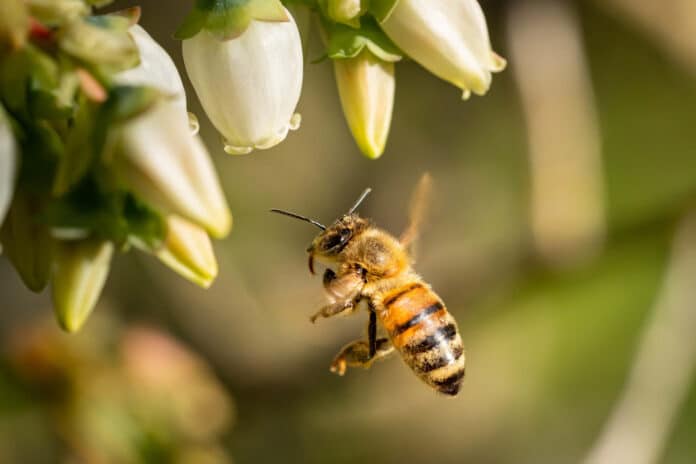Bees are the most significant pollinators of flowering plants. This partnership began ca. 120 million years ago, but the uncertainty of how and when bees spread across the planet has greatly obscured investigations of this key mutualism.
A new study presents a novel analysis of bee biogeography using extensive new genomic and fossil data. It demonstrated that the first bees evolved on an ancient supercontinent more than 120 million years ago, diversifying faster and spreading wider than previously suspected.
The study by Washington State University offers a new best estimate for when and where bees first evolved. It reconstructed the evolutionary history of bees, estimated their antiquity, and identified their likely geographical expansion worldwide.
The findings suggest that they originated in western Gondwana, a former supercontinent that at the time contained both the present-day continents of Africa and South America.
Assistant professor of WSU’s Department of Entomology, Silas Bossert, said, “This is the first time we have broad genome-scale data for all seven bee families.”
“For the first time, we have statistical evidence that bees originated on Gondwana. We now know that bees are originally southern hemisphere insects.”
The researchers discovered evidence that bees traveled north when the new continents emerged, diversifying and expanding in concert with angiosperms, the blooming plants. They then settled in Australia and India. Before the Tertiary period began 65 million years ago—when dinosaurs went extinct—all major bee groups appeared to have split off.
According to experts, the great diversity of the flora in the tropical areas of the western hemisphere may result from their long-standing interaction with bees. The huge and diversified rose family, which comprises 25% of all blooming plants, accounts for a sizable portion of the tropical and temperate host plants for bees.
The goal of Bossert’s team is to continue sequencing and researching the genetics and evolutionary history of additional species of bees. Their findings are essential for understanding how pollinators and blooming plants coevolved. Another way to maintain a healthy pollinator population is to comprehend how bees colonized new areas and filled ecological gaps in the modern era.
Journal Reference:
- Eduardo A.B. Almeida, Silas Bossert, Bryan N. Danforth et al. The evolutionary history of bees in time and space. Current Biology. DOI: 10.1016/j.cub.2023.07.005
